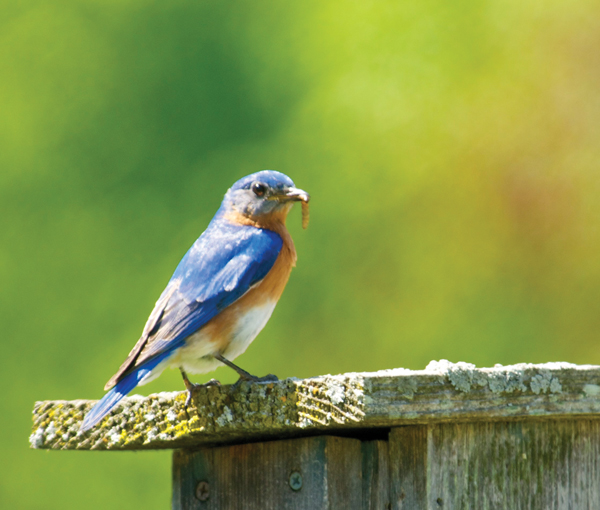News & Articles
Browse all content by date.

With a satisfying hiss, the quack grass root gave way. My eyes squeezed shut briefly against the spray of soil that came with it and then opened again to admire the creamy, foot-long ribbon with its bright green tassels. Weeding the garden is a chore, but it is not without some satisfactions.
As the community gardeners reclaim the Cable Community Farm from an old sheep pasture, I’ve found that the only way to beat the quack grass it to dig out as many roots as possible, as completely as possible. Working with a menacing-looking, forked-point, serrated-edge trowel, I dig in and loosen the soil, then tug out the grass roots with gentle pressure: too much and they’ll break—leaving behind runners that will multiply mercilessly; too little and they don’t budge.
I love the feeling when a long root releases completely with that tactile hiss, and I love the sight of clean, brown garden soil growing neat rows of my favorite veggies. Both give me a sense of accomplishment more immediate and less ambiguous than the academic tasks of my indoor life. Digging in dirt makes me happy, and the effects infiltrate deeply into the chemistry of my brain.
As I stir up the fragrant earth, it emits an elixir of happiness. A common soil bacterium—Mycobacterium vaccae—has been shown to increase serotonin (a happy chemical in your brain) levels in mice. Serotonin both decreases anxiety and increases cognition. The effects of the bacteria only last about a week in the mice though, which we can interpret as a prescription for frequent contact.
Inhaling bacteria isn’t the only benefit I derive from incessant gardening. It also gives me an excuse to stick my nose in nature for hours at a time, something I haven’t had enough of since childhood. I absorb sunshine, fresh air, and the company of other living things. Every weeding session yields new discoveries.
For example, the ends of my rows become jungles of white clover as it invades inward from the paths. Shaking the soil off a cluster of clover roots revealed a smattering of little lumps. Tiny though they are, the root nodules are no small thing. Each tiny pimple nurtures a splendid symbiosis.
It begins when the clover plant, a legume, releases flavonoids (plant compounds often lauded for their health benefits to humans) from its roots. Rhizobia bacteria in the soil sense the flavonoids and respond by producing their own signaling molecules. These nodulation factors trigger the plant to start growing bacterial condominiums (the pimples) and invite them in as working guests. As one of the clover’s root hairs winds around some bacteria, the encapsulated critters reproduce rapidly and form a little colony which gets carried over the root nodule’s threshold by an “infection thread.”
Once inside, the bacteria convert nitrogen gas from the atmosphere (a form that is unavailable to plants) into ammonia, which is then used by the plant to build amino acids and nucleotides, which are the building blocks of proteins and DNA respectively. There is no need to fertilize clover, since it hosts its very own nitrogen factories. In exchange, the plant provides the bacteria with a place to live, carbohydrates, proteins, and sufficient oxygen.
With a nod of respect to such a broadly beneficial partnership, I squashed this last cluster of clover on the overflowing bucket of weeds. The Rhizobia’s nitrogen isn’t leaked into the soil, but as the clover decomposes, it will enrich our compost pile nicely.
It was nice to look up finally, and notice the magical evening light. Just beyond the edge of the shade a flash of color caught my eye. Sunlight gleamed on the orange and blue suit of a male eastern bluebird. My, what a handsome fellow! As I watched, he swooped into a garden and came up with something long and wiggly in his bill. Bluebirds eat mostly insects caught on the ground, including pesky, garden-eating caterpillars. They can have them!
Smiling to myself, I tossed the weeds into the compost bin and grunted at the satisfying weight of my afternoon’s accomplishment. From joy-inducing digging to mutually beneficial relationships and beautiful pest control, gardening wraps me comfortably in the middle of nature’s wide web.
For over 45 years, the Cable Natural History Museum has served to connect you to the Northwoods. Come visit us in Cable, WI! Our new phenology exhibit: “Nature’s Calendar: Signs of the Seasons” is now open.
Find us on the web at www.cablemuseum.org to learn more about our exhibits and programs. Discover us on Facebook, or at our blogspot, http://cablemuseumnaturalconnections.blogspot.com.
| Tweet |


